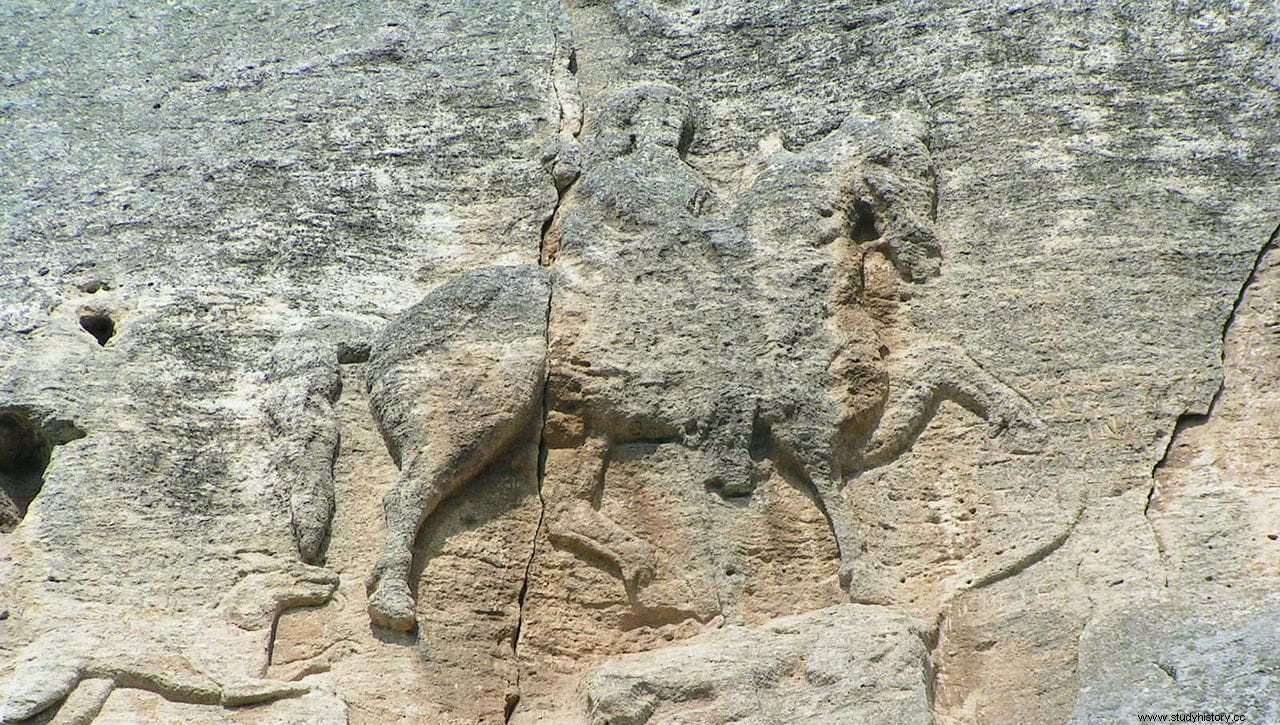Recently Bulgarian archaeologists found two new votive tablets depicting the Thracian Horseman in the ancient Byzantine city of Abritus, in the northeast of the country. They are the latest of many discoveries related to this indigenous deity, whose character and function are still unclear, despite the abundance of discoveries. What the researchers agree on is that the iconography of the horseman was Christianized to give rise to the equestrian representation of Saint George.
The Thracian Horseman He was represented as an armed warrior on horseback of which more than 2,500 examples have been found in reliefs and commemorative stelae, mainly from the Hellenistic and Roman periods. It is one of the first testimonies of the Thracian religion, a local cult that over time would come under Greek and Roman influence. This is evident from the Latin inscriptions, which denote the Thracian origin of the Roman military who dedicated them.

He usually appears represented in hunting scenes, or simply in movement, in some even in front of a kind of altar where there is a tree surrounded by a snake, one or several women who could be priestesses or goddesses, and animals for sacrifice. Sometimes the rider carries a spear and is accompanied by a dog.
Some researchers see in these female figures references to Cybele and Attis, goddesses from Asia Minor related to the Phrygians, with whom the Thracians may have had close contacts during the second and first millennium BC. This connection is confirmed in a Greek votive inscription found on the island of Thasos, which mentions the horseman, Cybele, and the Assyrian goddess Atargatis, called Derceto by the Greeks.
This Derceto was a mermaid-goddess, represented with the body of a fish and the head, arms and chest of a woman, who was sometimes confused with Dagon, a male Philistine god of similar appearance, and who is known from Lucian of Samosata and Apuleius to have she was also worshiped within Thrace.

Discoveries of Thracian horseman reliefs are spread throughout the eastern Balkans, ancient Macedonia, and even Greek Black Sea cities such as Apollonia Pontica (present-day Sozopol), Mesambria (present-day Nesebar), and Odesus (present-day Varna). The few examples found in surrounding areas are explained by the fact that Roman soldiers of Thracian origin could have been stationed there.
The first dated reliefs are those of the western coast of the Black Sea and the northern coast of the Aegean, which would belong to the pre-Hellenic period (3rd century BC), while those found in the interior are already from the middle of the 2nd century, and the most recent they extend to the 3rd century AD. Some researchers think that the origin of the iconography may be related to Reso, the Thracian king mentioned in the Iliad.

One of the later examples that has been related to the iconography of the horseman is the Knight of Madara, an early medieval relief dated around 710, carved in the rock of the Madara Plateau in northeastern Bulgaria. It is located 23 meters high on the wall of an almost vertical cliff, and represents a knight accompanied by a dog, sticking his spear into a lion. Archaeologists believe that it is a portrait of the Bulgarian Khan Tervel.
Inscriptions found in Romania identify the Thracian Horseman with Heros (alternatively called Eros, Eron, Herros or Herron), which seems to be a proper name and not a title related to the Greek hero cult. The Antarctic peninsula of Heros is named after the Thracian Horseman.
The Thracian Horseman survived in Christian art, where his iconography was applied to different saints such as Saint Demetrius of Thessalonica, Saint Menas and Saint George, all of whom were represented as warriors on horseback.
